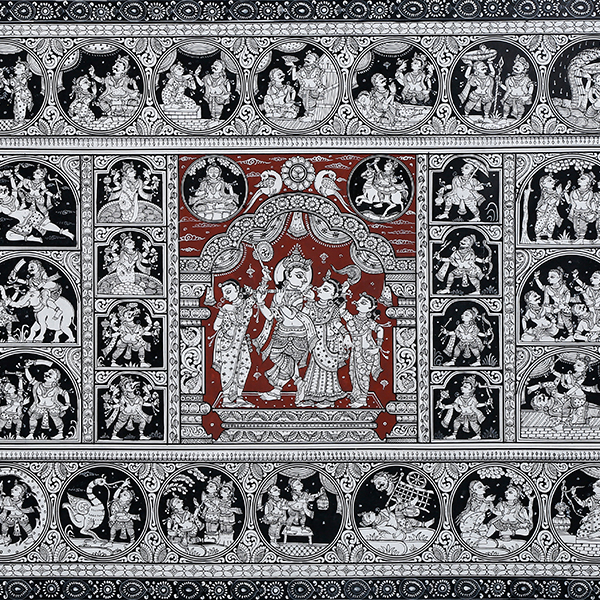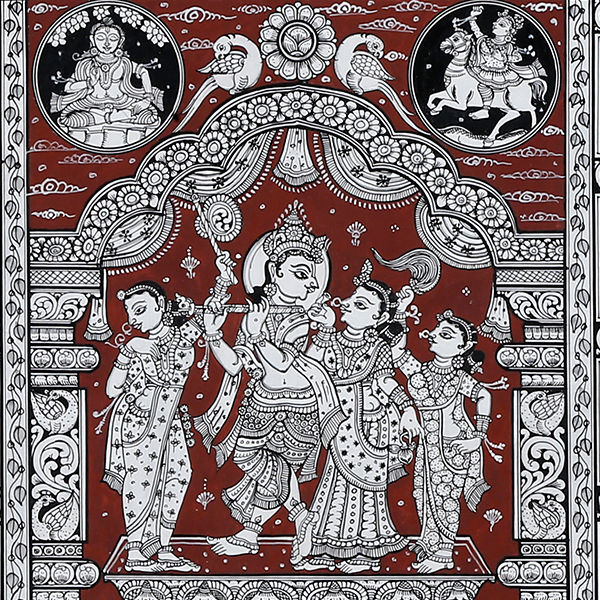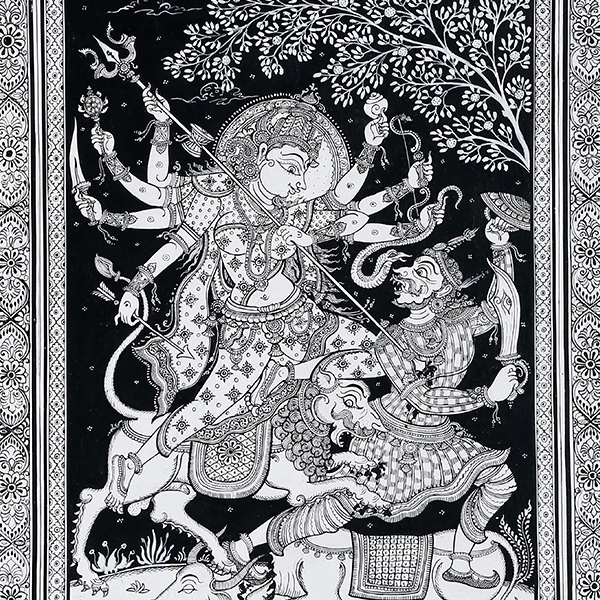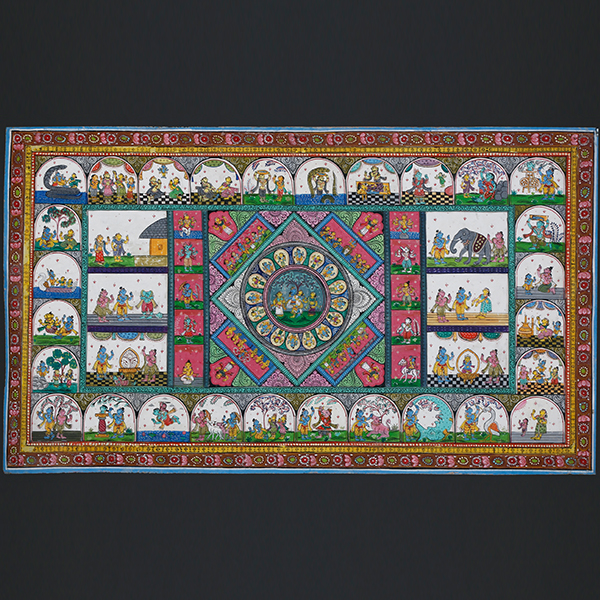
Map Loading...
Patachitra
ODISHA
Pattachitra - a Sanskrit word for a Hand Painting style that originated in Odisha more than 3000 years ago. It started when Painters of Odisha, or Odiyaa Painters, started making Chitra on a Patta as a religious offering to Temples. These paintings showed religious stories and life events of deities and people from that period.
The art of Pattachitra in Odisha is steeped in legend and closely connected to the much-loved Lord Jagannath of Puri, an avatar of Lord Krishna. On the full-moon day of the Jyestha month (May-June), which is also considered the birthday of Lord Jagannath, the deities of the Jagannath Temple are taken for a ceremonial bath to stave off the summer heat.
The story goes that due to the bath, the deities fall sick and develop a fever for 15 days, a period known as 'Anasar', i.e. the first fortnight of Ashada (June-July). During this time, devotees cannot have the darshan of their beloved god.
Pattachitra paintings of Lord Jagannath, Balabhadra and Subhadra, originated as a substitute for the deities so that devotees could worship these gods even when the idols were kept away from the public after their ritual bath. Traditionally, Pattachitra is painted by the artists of Raghurajpur, a heritage village in Odisha. Paralakhemundi, Chikiti, Dana Sahi and Sonepur are other centres where art is practised. Initially named 'Anasar Patti’, to reflect the 15-day period when the idols are secluded, the art form is now known as 'Pattachitra'. Even today, these paintings depict folklore in the same way they were depicted centuries ago, undisturbed and uninfluenced by time.
The Pattachitra when painted on cloth follows a traditional process of preparation of the canvas. First, the base is prepared by coating the cloth with the soft, white, stone powder of chalk and glue made from tamarind seeds. This gives the cloth tensile strength and a smooth, semi-absorbent surface, allowing it to accept the paint. The artist does not use a pencil or charcoal for the preliminary drawings. It is a tradition to complete the borders of the painting first. The painter then starts making a rough sketch directly with the brush using light red and yellow. The main flat colours are applied next; the colours used are normally white, red, yellow, and black. The painter then finishes the painting with fine strokes of black brush lines, giving the effect of pen work. When the painting is completed it is held over a charcoal fire and lacquer is applied to the surface. This makes the painting water-resistant and durable, besides giving it a shining finish. The materials used in the paint are from vegetable, earth, and mineral sources. Black is made out of lampblack, yellow from haritala stone, and red from shingle stone. White is prepared from crushed, boiled, and filtered shells. The subject matter of the Pattachitras include religious, mythological, and folk themes. Krishna Leela and Lord Jagannath are important motifs.
Pattachitra artists also paint their themes on wooden boxes, on bowls, on tussar silk, on outer shells of the coconut, and on wooden doors. They are also working on producing painted wooden toys based on animals and birds portrayed in the paintings.
Material
Paper
Technique
Painting
Showcase




